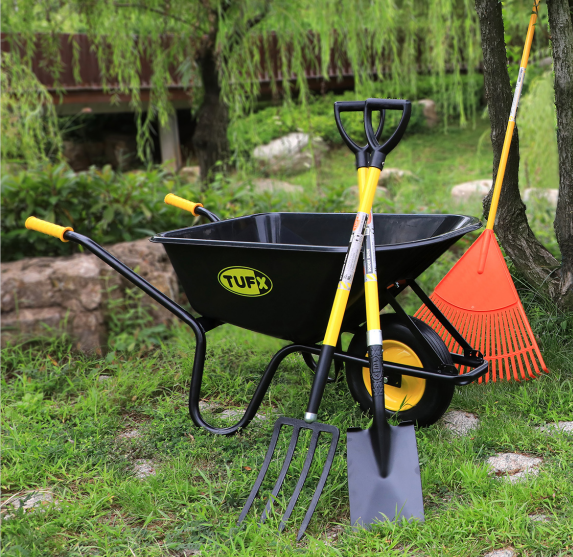Wheelbarrows are humble yet indispensable tools in any gardener's or DIY enthusiast's arsenal. Whether you're hauling dirt, mulch, or construction materials, a well-maintained wheelbarrow can make your tasks more efficient and enjoyable. In this guide, we'll delve into the essential maintenance practices and proper usage instructions to ensure your plastic garden wheelbarrow serves you well for years to come.

Maintenance Tips:
-Regular Cleaning:
After each use, make it a habit to clean your wheelbarrow thoroughly. Remove any dirt, debris, or moisture to prevent corrosion and rust.
Use a hose or pressure washer for a quick and efficient clean. Pay attention to the wheel, tray, and handles.
-Inspect for Wear and Tear:
Regularly inspect the wheelbarrow for signs of wear and tear. Check for loose nuts and bolts, cracks in the wheelbarrow tray, and any damage to the handles.
Replace damaged or worn-out parts promptly to avoid further deterioration.
-Lubricate Moving Parts:
Keep the wheel and axle well-lubricated to ensure smooth movement. Use a general-purpose lubricant to prevent friction and reduce wear on these components.
-Tire Maintenance:
Check the tire pressure regularly. Under-inflated tires can make the wheelbarrow harder to maneuver, while over-inflated tires may lead to punctures.
Replace damaged or flat tires promptly to maintain optimal functionality.
-Protect Against Rust:
If your wheelbarrow is made of metal, apply a rust-resistant coating to protect it from the elements. This is especially important if you store your wheelbarrow outdoors.
Proper Usage Instructions:
-Weight Distribution:
Pay attention to the weight distribution when loading your wheelbarrow. Distribute the weight evenly to prevent tipping and make it easier to maneuver.
-Proper Lifting Techniques:
When lifting and dumping materials, use proper lifting techniques to avoid strain on your back. Bend your knees, not your back, and lift with your legs.
-Mind the Capacity:
Every wheelbarrow has a specified weight capacity. Exceeding this limit can lead to damage or accidents. Be aware of the weight of your load and adhere to the recommended capacity.
-Maneuvering on Uneven Terrain:
When navigating uneven terrain, take it slow and steady. Tilt the wheelbarrow back slightly to make it easier to push, and avoid sudden movements to prevent tipping.
-Storing Properly:
Store your wheelbarrow in a dry, covered area when not in use to protect it from the elements. If possible, store it upside down to prevent water from collecting in the tray.
Conclusion:
By following these maintenance tips and proper usage instructions, you'll ensure that your wheelbarrow remains a reliable companion in your gardening or DIY endeavors. A well-cared-for wheelbarrow not only extends its lifespan but also enhances your overall efficiency and comfort during various tasks. So, roll up your sleeves, take care of your wheelbarrow, and let it continue to be a trusty workhorse in your outdoor projects.